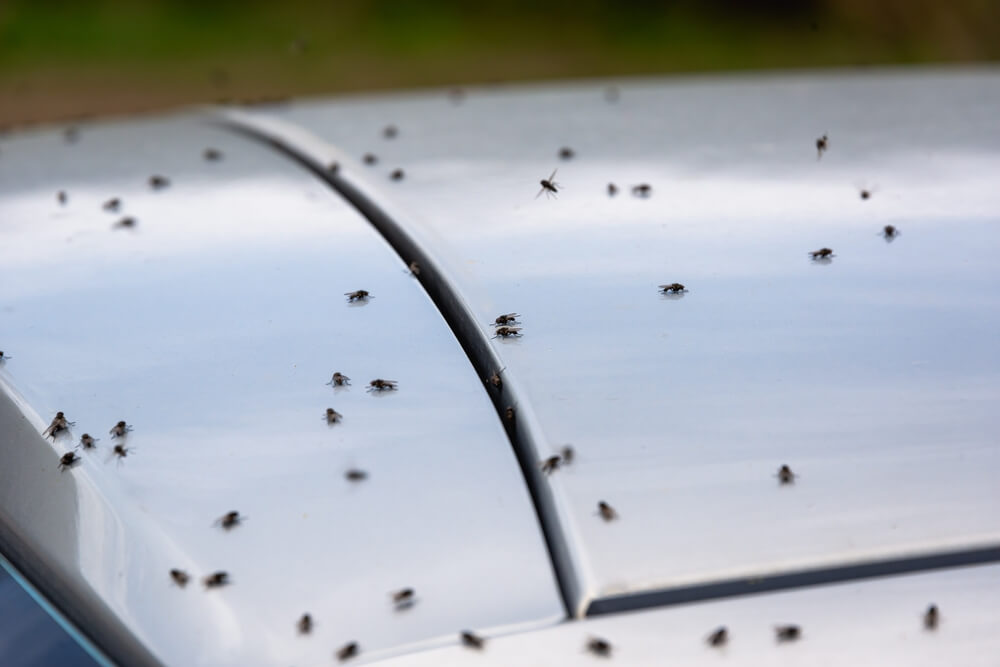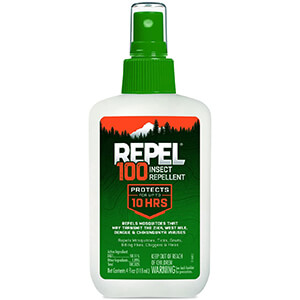Tips to remove flies and other insects to keep peaceful feng shui on your camping trip
Insects can gain access to your car in several different ways.
If it’s untidy, for instance, then fast food bags are prime spots for flies to lay eggs.
An apple rolling out of your lunch might quickly become a fruit-fly infestation.
It’s frustrating, and unless it’s summer, when it’s too hot for fly larvae, you’re going to have to do something about it – well, that, or get used to driving with tiny, flying pests.
Thankfully, there are a few ways that you can get proactive to get rid of those flying, buzzing bugs, and today we’re going to share those with you.
Let’s talk about how to get rid of flies in your car!
Time to Vacuum Out and Clean Your Car
One of the biggest reasons that insects are hanging around inside your car is that they’ve found a food source.
Fast food bags are the biggest culprit for this.
Some of us are always on the run, and it’s not always convenient to clean immediately.
Worse, food particles can end up in the carpet that you might not even see!
Get yourself a garbage bag (or two, if you’ve been particularly ‘busy’ of late), and start things off by de-trashing the inside.
If you’ve got a local self-service carwash, then it’s a good idea to do your cleaning there so that you’ll be ready for the next step.
With the trash gone, that next step will be vacuuming.
As food particles can end up in the carpet, relatively well camouflaged, a thorough vacuuming will help to ensure that flies and other insects will have no reason to stick around.
It’s also a good idea to close all your air vents as this is one of the most common ways that insects sneak into your vehicle.
With the trash gone, the carpet and upholstery vacuumed, and the ventilation ‘secret doors’ closed, the next time you get into your car, it should hopefully be fly-free.

Fruit Flies, Gnats, and a Simple Trap
Fruit flies and gnats are among the most annoying insects that can end up in your car.
Fruit Flies are the worst of the two because they reproduce quickly.
If an adult female can find something wet and rot in your car, she can lay up to 2000 eggs, and within around three days, her eggs have gone from larvae to full-fledged adults.
Thankfully, an easy trick to get rid of them also works with gnats.
Start with a cheap, plastic cup or bowl, and fill it 1/3 of the way full with Apple Cider vinegar.
Next, cover the top with plastic wrap, which you will secure by stretching rubber bands to match the circumference and pulling them down to keep the plastic tight.
The rubber bands should be about an inch below the top of your container.
Use something pointy, such as a nail, to gently make some fruit-fly-sized holes in the plastic, making a few slightly larger but not by much.
Leave the trap in your car and wait – the condensation makes the underside of the plastic, slippery so that the flies can get in, but they cannot get out!
Can I Use Bug Spray in My Vehicle?
Insecticide use in your car needs to be considered carefully – you can’t just pick any spray and lose it inside your vehicle.
Aside from potentially bleaching areas or lingering chemicals that could be hard to remove, unless the insecticide is specifically designed for your car, it needs to be avoided.
That said, if you have a specific insecticide formulated for your car, treat it much the same as you do when you flea bomb your house.
Start by waiting until a little before bed to spray the inside of your car, so it has time to cool down properly, then leave it overnight.
Set your alarm for a few hours earlier than usual in the morning so that you can open the car doors, roll the windows down, and let it air out for 2 – 3 hours before you go anywhere in the vehicle.
A much less intrusive way to do this, however, is to invest in some insecticide strips.
These strips are perfect for a tiny environment such as a car, and they typically work by contact, so that when the bugs touch the strip, they’ll become poisoned and spread that poison around to the other bugs.
After a few days, you can remove the strips, but in the meantime, drive with the windows open for ventilation.

Natural Repellants as a Safe Option
If the thought of spraying chemicals or applying strip-poisons inside your vehicle makes you a little uneasy, then don’t worry.
There are certainly some natural alternatives that will also do the trick nicely.
Certain oils, for instance, smell wonderful and are simply concentrated forms of natural repellents the insects already avoid.
Here are a few examples of oils that will help keep those bugs at bay:
- Peppermint oil
- Lemongrass oil
- Geranium oil
- Citronella oil
- Tea Tree oil
You can also make a simple bug spray.
Just get yourself a cheap plastic spray bottle, or repurpose an old bottle of Glass cleaner that you’ve cleaned out thoroughly, and fill it to 2/3 full with water.
Add in 2 -3 drops of lemon oil and 2-3 drops of vanilla, or go with a combination of oils from our list.
Spray a few water-safe areas with your new homemade bug spray lightly (for quick drying), and while the inside of your vehicle will smell wonderful, the insects should stay clear of it.
In closing
If you’ve got flies or insects in your car, you’ll want to deal with them quickly.
Thankfully, you’ve got options! Start with a thorough cleaning, and if you’re dealing with fruit flies, then make one of our simple traps.
Automotive-safe insecticides and insect strips may also be employed, or you could go with natural oils – whichever you like best – don’t wait to do something.
Left alone, the problem can quickly become much, much worse!








